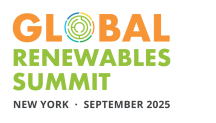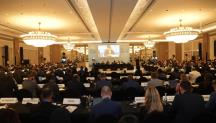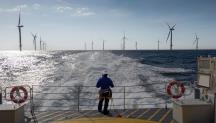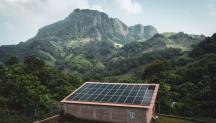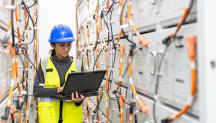

Key Enablers to Triple Renewables by 2030: Infrastructure and System Operation
Newsletter
The world has seen an unprecedented 14% increase of renewables capacity in 2023, making renewable energy the fastest growing source of electricity. Yet, the record progress is nowhere near the tripling renewable power generation capacity target pledged at COP28.
As the world races to achieve 11.2 Terawatts of renewables capacity by 2030, the integration of renewable sources into the power grid becomes more vital. Accommodating higher shares of variable renewable energy (VRE) – i.e. wind and solar – in the power system would require the modernisation of existing infrastructure. Currently, lagging infrastructure development and inefficiencies in power grids represent some of the energy transition’s barriers identified by the International Renewable Energy Agency (IRENA).
A future power system that not only allows high shares of VRE, but also more electrification in the end-use sectors calls for enhancement and upgrades of existing grid infrastructure. Grid reinforcements, storage capacities, digitalisation and smart solutions need to pick up their pace to foster VRE deployment.
Enhancing the system’s flexibility and significantly increasing electricity storage capacities in a cost-effective manner have thus become crucial to ensure the security of energy supply. Implementing a battery storage system is necessary to achieve flexible and resilient power systems. Solutions that intelligently direct solar generation to daytime loads or storage for night-time use will cut the cost of grid integration.
Digitalisation plays a particularly key role for increasingly decentralised systems with high shares of distributed energy resources. It enables the management of data, coordination and interaction among all actors in the systems. By using real-time data and communication technology, system operators can have better power grid situational awareness – including more accurate weather forecasting – which enhances efficiency and flexibility of the system, thereby unlocking great flexibility potential on the demand side, optimising operations and improving system reliability. This in turn will facilitate higher VRE penetration in the power system.
In addition, IRENA analysis shows that sector coupling – the process of interconnecting the power sector with the broader energy sector (e.g. heat, gas, mobility) – can be a key source of flexibility for the power sector while decarbonising the end-use sectors. Through approaches such as electrification and thermal energy storage, the various end-use sectors can be coupled to provide services such as heating, cooling and transport. Coupling different sectors, along with the support of intelligent energy management systems, can broaden the options for dispatching renewable power with greater grid flexibility to the system.
On the ground, implemented solutions for the integration of VRE come from the synergies of different innovations across different dimensions, such as technology, market design, business models and systems operation. This is called systemic innovation.

Modernising and expanding infrastructure for an energy system that relies on VRE is capital intensive. To triple renewables capacity by 2030, USD 720 billion on average must flow each and every year between 2024 and 2030 (inclusive) to grids, electricity storage, demand-side management and other supply-side flexibility options.
But the world has sufficient capital available. To drive the capital in the direction of infrastructure transformation, IRENA urges countries to take these actions:
- provide incentives for infrastructure investments where market barriers exist.
- streamline permitting procedures for large-scale infrastructure without compromising environmental and social impact assessments and ensure public acceptance is fostered.
- provide public finance for the development of the infrastructure required.
Without accelerated investments in infrastructure and system operation, 11.2 TW of renewables capacity by 2030 would be a distant destination. In the end, these investments will not only lead to the achievement of energy transitions and climate goals, but also green industrialisation and sustainable development growth.
